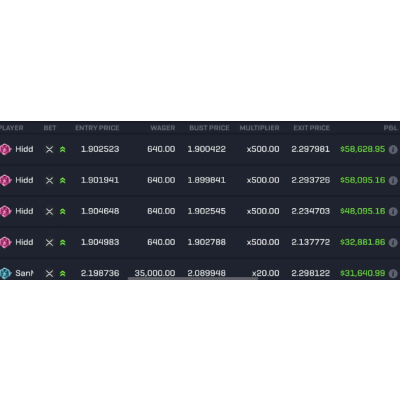

High-frequency trading (HFT) in the context of cryptocurrencies involves executing a large number of orders at very fast speeds. These bots leverage algorithms to analyze market data and execute trades based on predefined criteria. In the volatile crypto market, HFT bots can capitalize on small price fluctuations to make profits.
web3.py allow interaction with Ethereum, and ccxt can be used for connecting to various cryptocurrency exchanges.web3.py to interact with the Ethereum blockchain. For trading on exchanges, ccxt provides a unified way to interact with a wide range of exchanges with cryptocurrency trading capabilities.To start, you need to set up web3.py to interact with the Ethereum blockchain:
from web3 import Web3
# Connect to an Ethereum node
w3 = Web3(Web3.HTTPProvider('https://mainnet.infura.io/v3/YOUR_INFURA_PROJECT_ID'))
# Check connection
print(w3.isConnected())A simple trading strategy could be based on price differences between two exchanges (arbitrage). Note that real HFT strategies are much more complex and require thorough testing.
import ccxt
# Initialize exchange connections
binance = ccxt.binance()
coinbase = ccxt.coinbase()
# Fetch ETH/USD price from both exchanges
binance_eth_price = binance.fetch_ticker('ETH/USD')['close']
coinbase_eth_price = coinbase.fetch_ticker('ETH/USD')['close']
# Example strategy: buy on Coinbase and sell on Binance if profitable
if coinbase_eth_price < binance_eth_price:
# Execute trade (This is a placeholder. Implement actual trading logic)
print("Buying ETH on Coinbase and selling on Binance.")Use Telegram’s Bot API to send notifications. First, create a bot with BotFather on Telegram to get a token.
import requests
def send_telegram_message(message, bot_token, chat_id):
send_text = f'https://api.telegram.org/bot{bot_token}/sendMessage?chat_id={chat_id}&text={message}'
response = requests.get(send_text)
return response.json()
# Example usage
bot_token = 'YOUR_TELEGRAM_BOT_TOKEN'
chat_id = 'YOUR_CHAT_ID'
send_telegram_message("Trade executed successfully.", bot_token, chat_id)Technical indicators are crucial for analyzing market trends and making informed decisions. Libraries like TA-Lib or Pandas TA can be used for calculating indicators such as Moving Averages (MA), Relative Strength Index (RSI), and Bollinger Bands.
import pandas as pd
import pandas_ta as ta
# Example: Calculating Moving Averages
def calculate_moving_averages(prices, short_window=7, long_window=21):
"""Calculate short and long moving averages."""
df = pd.DataFrame(prices, columns=['close'])
df['SMA'] = df['close'].rolling(window=short_window, min_periods=1).mean()
df['LMA'] = df['close'].rolling(window=long_window, min_periods=1).mean()
return df
# Example usage with dummy data
prices = [100, 105, 103, 110, 115, 120, 125, 130, 128, 126]
ma_df = calculate_moving_averages(prices)
print(ma_df)Incorporating market sentiment analysis can provide insights into potential market movements. This can be achieved by analyzing social media channels, news headlines, and trading volumes. For this, you might use natural language processing (NLP) libraries like NLTK or spaCy to gauge sentiment from text data.
Analyzing the depth of the order book can give you insights into potential price movements. A sudden increase in buy orders might indicate a potential price increase, while an increase in sell orders might suggest a price drop. This analysis requires fetching real-time order book data from exchanges and applying statistical analysis to predict price movements.
For trading tokens on decentralized exchanges (DEXs) or interacting with other on-chain activities, your bot needs to interact with smart contracts. Using web3.py, you can call smart contract functions to execute trades directly on the blockchain.
from web3 import Web3
# Initialize Web3
w3 = Web3(Web3.HTTPProvider('https://mainnet.infura.io/v3/YOUR_INFURA_PROJECT_ID'))
# Smart contract interaction
def execute_trade(contract_address, abi, function_name, *args):
contract = w3.eth.contract(address=contract_address, abi=abi)
tx = contract.functions[function_name](*args).buildTransaction({
'from': w3.eth.account.privateKeyToAccount(YOUR_PRIVATE_KEY).address,
'nonce': w3.eth.getTransactionCount(YOUR_ADDRESS),
# Additional transaction parameters (gas, gasPrice)
})
signed_tx = w3.eth.account.signTransaction(tx, YOUR_PRIVATE_KEY)
tx_hash = w3.eth.sendRawTransaction(signed_tx.rawTransaction)
return tx_hash.hex()
# Note: Replace 'YOUR_PRIVATE_KEY', 'YOUR_ADDRESS', 'contract_address', 'abi', and 'function_name' with actual values.Arbitrage involves simultaneously buying and selling an asset in different markets to profit from price differences. In the context of cryptocurrencies, these opportunities can occur between different exchanges (spatial arbitrage) or within the same exchange but between pairs (triangular arbitrage).
Spatial Arbitrage Algorithm:
Triangular Arbitrage Algorithm:
Execution speed is critical in HFT. Once an opportunity is identified, the algorithm must execute the necessary trades before the price discrepancy is corrected by the market.
HFT strategies come with their own set of risks, including market risk, execution risk, and technological risk.
def find_arbitrage_opportunity(exchange_data):
for asset in exchange_data:
buy_price, buy_exchange = find_lowest_ask(asset)
sell_price, sell_exchange = find_highest_bid(asset)
profit_margin = calculate_profit_margin(buy_price, sell_price)
if profit_margin > MIN_PROFIT_THRESHOLD:
execute_trades(buy_exchange, sell_exchange, asset, buy_price, sell_price)
def execute_trades(buy_exchange, sell_exchange, asset, buy_price, sell_price):
# Placeholder for trade execution logic
# Ensure that you have pre-validated the trade feasibility
buy_order_result = place_buy_order(buy_exchange, asset, buy_price)
if buy_order_result:
sell_order_result = place_sell_order(sell_exchange, asset, sell_price)
if sell_order_result:
log_trade_success(asset, buy_price, sell_price)
else:
handle_trade_failure("Sell", sell_exchange, asset)
else:
handle_trade_failure("Buy", buy_exchange, asset)A successful HFT algorithm in the cryptocurrency market requires a blend of sophisticated mathematical models, state-of-the-art technology, and continuous optimization based on market feedback. The key to profitability lies not just in identifying opportunities but in executing trades faster and more efficiently than competitors. While the conceptual and technical frameworks provided here outline the basis of an HFT arbitrage strategy, the implementation details, including risk management and execution mechanics, must be meticulously developed and constantly refined.